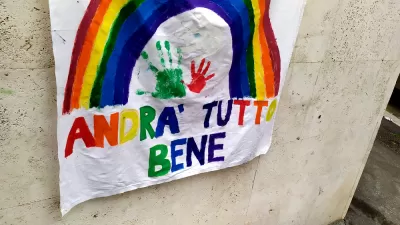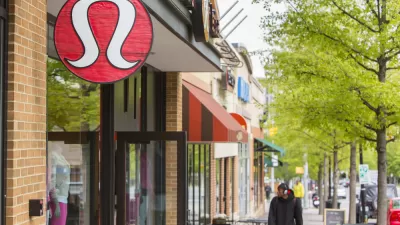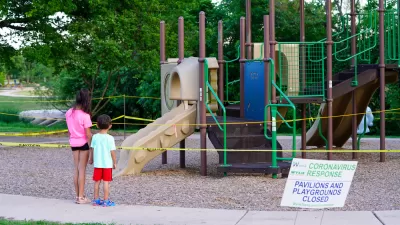People are finding new ways to connect digitally across physical spaces during the coronavirus pandemic, and these temporary solutions could have a lasting impact on the way we live.

Americans are not good at creating and maintaining community. Remember Bowling Alone, Robert Putnam's book about the decline of social capital in American communities? It was published way back in 2001. The decline of organized religion, the rise of suburbia and the nuclear family, the rise of the gig economy, technology's ability to make us feel pseudo-connected to thousands of people only to be truly connected to very few—they all play their part.
The coronavirus pandemic, then, and the self-quarantining and social-distancing that come with it, should feel vaguely familiar. It's not an entirely new crisis for us; it's more of the same, only with the volume turned up to 15. The spotlight now shines directly on what's long been our problem: we live closer to each other than ever but haven’t figured out how to actually be close.
For years now, digital tools like Slack and Zoom have offered us the ability to collaborate with our colleagues despite being remote. And they are enormously helpful. But they don’t quite bridge the gap. Being in true proximity to each other—hugging, shaking hands, sitting side by side or face to face—remains the gold standard of professional connection.
Recently I sat in on a singalong organized by my son's preschool. Twenty families logged onto Zoom to sing together. Even when the connection was smooth it was heart wrenching to see all the kids waving at each other after some time away, but brutal to see them realize that a singalong over Zoom lacks the in-person magic of sitting on laps and hearing the voices of your friends echo off the same walls. They were there, but really, they weren’t there at all.
People are overcoming this challenge in creative ways.
Yo-Yo Ma, the famed cellist, has been posting a video every few days of miniature concerts—2-3 minute clips of him playing his favorite musical pieces transposed for the cello. It helps that he's a master at his craft, but the pure emotion and love that comes through is mesmerizing. Sharing your most precious resource, your love and expertise, can be a key ingredient in bridging our proximity gap.
In Europe, quarantined Italians have been sharing videos of themselves perched on their balconies, joining together in song—the national anthem, sure, but also pop songs. It is a defiant reaching out. Joining forces in symbolic battle (singing) against a common enemy (separation) also can be a key ingredient in bridging this gap.
Like many parents of young children, already overwhelmed with child rearing and now quarantined, we have taken to having cocktails remotely with other parents after our kids go to sleep. We even asked a friend known for making great drinks to review our liquor cabinet inventory and suggest a cocktail. We then joined online to drink it together and catch up. Sharing a common task remotely—creating a ritual to put our bodies in synch—can also be a key ingredient in fostering community while remote.
Will any of these practices last beyond the pandemic? What can we do to help them flourish so people feel more rooted and connected no matter where they are? What other community-enabling practices, traditions, or rituals will sprout during this brief darkness?
As people around the world construct workarounds to connect with each other across personal moats, many of them will be shared and loved on social media. Some may even spawn traditions, where five or ten years from now we find ourselves engaging in practices that bring us closer, forgetting that their roots lie in a pandemic. A select few may even launch companies premised on overcoming our pre-coronavirus social distancing.
This may be the meager silver lining—the pandemic will make us investigate how being there, but not really there, changes urban culture. And the fertile ground for solutions it creates can be farmed for our own future benefit.
No matter where it comes from, this crisis is going to hasten the rewiring of our communities—how we relate to each other, what we choose to save when our communities are stretched thin, and how we bond over distances. New urban systems (and, undoubtedly, companies) will sprout from jury-rigged solutions being crafted at this very moment to withstand the coming months.
So stay safe, but keep your eyes open. The future of urban life is being conceived right in the middle of this storm. If we stay vigilant, we can learn tricks for maintaining or perhaps even strengthening our communities in a future that sometimes seems like it conspires to keep us farther apart than ever.

Study: Maui’s Plan to Convert Vacation Rentals to Long-Term Housing Could Cause Nearly $1 Billion Economic Loss
The plan would reduce visitor accommodation by 25,% resulting in 1,900 jobs lost.

North Texas Transit Leaders Tout Benefits of TOD for Growing Region
At a summit focused on transit-oriented development, policymakers discussed how North Texas’ expanded light rail system can serve as a tool for economic growth.

Using Old Oil and Gas Wells for Green Energy Storage
Penn State researchers have found that repurposing abandoned oil and gas wells for geothermal-assisted compressed-air energy storage can boost efficiency, reduce environmental risks, and support clean energy and job transitions.

How Madison’s Tree Planting Efforts Are Growing a Healthier Community
Madison’s annual tree planting initiative is enhancing environmental resilience, public health, and community livability by adding 1,400 carefully selected trees citywide, with strong community and institutional support for urban forestry.

Texas State Bills Could Kill Transit Funding in Dallas, Austin
State lawmakers could pull funding from the state’s largest transit agency and the ambitious Project Connect, a voter-approved transit project in Austin.

Opinion: DC Encampment Sweeps Hide, but Don’t Solve, Homelessness
President Trump recently ordered the clearing of encampments built by unhoused people on federal land in Washington, D.C.
Urban Design for Planners 1: Software Tools
This six-course series explores essential urban design concepts using open source software and equips planners with the tools they need to participate fully in the urban design process.
Planning for Universal Design
Learn the tools for implementing Universal Design in planning regulations.
Ascent Environmental
Borough of Carlisle
Institute for Housing and Urban Development Studies (IHS)
City of Grandview
Harvard GSD Executive Education
Toledo-Lucas County Plan Commissions
Salt Lake City
NYU Wagner Graduate School of Public Service





























